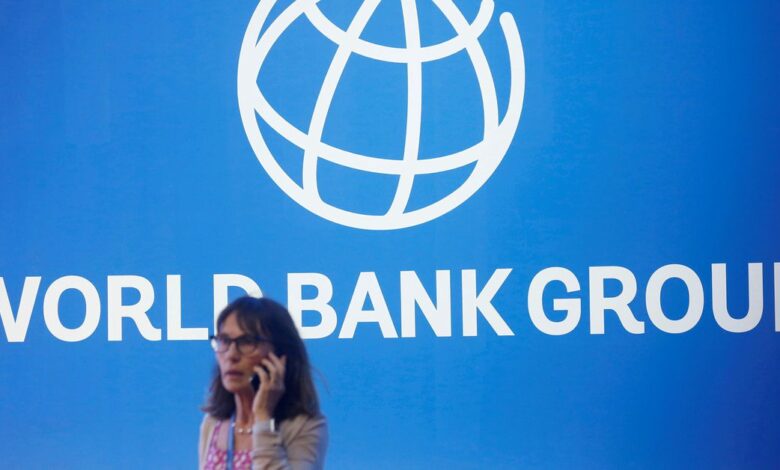Poor countries’ debt rose 12% to record $860 bln in 2020- World Bank

A participant stands close to a emblem of World Financial institution on the Worldwide Financial Fund – World Financial institution Annual Assembly 2018 in Nusa Dua, Bali, Indonesia, October 12, 2018. REUTERS/Johannes P. Christo
WASHINGTON, Oct 11 (Reuters) – The debt burden of the world’s low-income international locations rose 12% to a document $860 billion in 2020 as international locations responded to the COVID-19 disaster with large fiscal, financial, and monetary stimulus packages, the World Financial institution mentioned in a report launched Monday.
World Financial institution President David Malpass mentioned the report confirmed a dramatic improve within the debt vulnerabilities going through low- and middle-income international locations and referred to as for pressing steps to assist international locations attain extra sustainable debt ranges.
“We’d like a complete method to the debt downside, together with debt discount, swifter restructuring and improved transparency,” Malpass mentioned in a press release accompanying the brand new Worldwide Debt Statistics 2022 report.
“Sustainable debt ranges are important for financial restoration and poverty discount,” he mentioned.
The report mentioned the exterior debt shares of low- and middle-income international locations mixed rose 5.3% in 2020 to $8.7 trillion, affecting international locations in all areas.
It mentioned the rise in exterior debt outpaced gross nationwide earnings (GNI) and export development, with the exterior debt-to-GNI ratio, excluding China, rising 5 proportion factors to 42% in 2020, whereas their debt-to-export ratio surged to 154% in 2020 from 126% in 2019.
Malpass mentioned debt restructuring efforts have been urgently wanted given the expiration on the finish of this yr of the Group of 20 main economies’ Debt Service Suspension Initiative (DSSI), which has supplied short-term deferral of debt funds.
The G20 and Paris Membership of official collectors launched a Frequent Framework for Debt Remedies final yr to restructure unsustainable debt conditions and protracted financing gaps in DSSI-eligible international locations, however solely three international locations – Ethiopia, Chad and Zambia – have utilized to this point.
The report confirmed that internet inflows from multilateral collectors to low- and middle-income international locations rose to $117 billion in 2020, the best stage in a decade.
Web lending to low-income international locations rose 25% to $71 billion, additionally the best stage in a decade, with the IMF and different multilateral collectors offering $42 billion and bilateral collectors $10 billion, it mentioned.
Carmen Reinhart, the World Financial institution’s chief economist, mentioned the challenges going through extremely indebted international locations may worsen as rates of interest rose.
“Policymakers want to arrange for the potential for debt misery when monetary market situations flip much less benign, notably in rising market and creating economies,” she mentioned.
The World Financial institution mentioned it expanded the 2022 report to spice up transparency about world debt ranges by offering extra detailed and disaggregated knowledge on exterior debt.
The info now embody a breakdown of a borrowing nation’s exterior debt inventory to indicate the quantity owed to every official and personal creditor, the foreign money composition of this debt, and the phrases on which loans have been prolonged.
For DSSI-eligible international locations the information additionally present the debt service deferred in 2020 by every bilateral creditor and the projected month-by-month debt-service funds owed to them by means of 2021.
Reporting by Andrea Shalal; enhancing by Diane Craft
:





